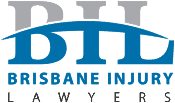WHIPLASH
SENARIO
“You are in a car at the traffic lights. Without warning, another car strikes your car from behind. You attend your GP and an x-ray of your neck was taken. The report shows no damage but you experience pain around your neck. ”
You may be suffering from a whiplash injury.
Whiplash injury (also called neck strain or soft tissue cervical injury) results from acceleration-deceleration forces on the neck. Such injuries are typical in motor vehicle accidents resulting from rear-end or side impact collisions.
These forces may result in painful injuries to the muscles, ligaments and joints in the neck, and other spinal areas. The most common symptom after a whiplash injury is neck pain or stiffness. This can occur immediately after the injury or even after a few days.
The range of symptoms resulting from whiplash is called Whiplash Associated Disorder (WAD) and severity can vary from no symptoms (including no pain or discomfort and no physical sign of injury) to severe (including pain, fracture and/or dislocation of the neck).
Other symptoms, depending on the severity, may include headaches, pain in the shoulder and arms, dizziness, pins and needles or numbness, irritability and/or weakness in the neck, visual and auditory symptoms, dysphagia, concentration difficulties. It may also cause chronic neck pain.
X-rays may be taken of the neck area; however, they do not reveal injuries to the soft tissues of the neck and obviously cannot measure levels of pain (which is generally subjective in nature). X-rays are usually taken to rule out injuries such as bone fractures or dislocations. In addition, CT scans are reserved for those with bone injury and MRI scans occasionally show severe soft tissue injury.
RECOVERY
Most people recover from a whiplash injury and the rate of recovery varies from one person to another. Recovery depends in part upon the severity of the initial injury, as well as what (if any) rehabilitation is undertaken post injury.
Many will recover within a few days or weeks and for others, it may take several months to recover. Pain may take a few weeks or months to settle. A small percentage of people may develop long-term neck pain that unfortunately, never resolves.
TREATMENT
Treatment may include analgesia, physiotherapy and remedial massage.
Perhaps, a more insidious injury that people may not even notice are psychological symptoms; for example, anxiety, driving phobia and even Post Traumatic Stress Disorder, all of which may be treated by counselling and/or medication.
It is recommended that injured person:
- Take care of the neck and not to expose it to unnecessary strain during the healing process;
- Adapt some activities to care for the neck in the early stages of recovery, including limiting some usual work and recreational activity in the early to mid stages of recovery;
- Continue doing regular exercise to neck muscles; and
- Gradually resume normal activity as neck improves.
Pain may continue into the recovery period but this does not automatically indicate further injury. It is best to stay active and undertake gentle exercise to recover as directed by your treating medical provider.
Rehabilitation providers may be able to assist with the recovery.
CTP SCHEME
In Queensland, the Motor Accidents Insurance Act 1994 (the Act) imposes an obligation to insurers to provide rehabilitation services that are reasonable and appropriate to “promote and encourage, as far as practicable, the rehabilitation of claimants who sustain person injury because of motor vehicle accidents,” and “to promote measures directed at eliminating or reducing causes of motor vehicle accidents and mitigating their results.”
This is to ensure optimum recovery of the injured person, an early return to gainful employment and speedier claims resolution.
Rehabilitation in the context of the Act includes the use of medical, psychological, physical, social, educational and vocational measure to restore, as far as reasonably possible, physical or mental functions lost or impaired through personal injury and to optimise the quality of life of a person who suffers the loss or impairment of physical or mental functions through personal injury.
For people experiencing whiplash injuries from a motor vehicle accident, assistance for their recovery may be available.
HOW CAN WE HELP?
Brisbane Injury Lawyer’s aim is to obtain full compensation for you to cover medical expenses, rehabilitation costs, lost wages and pain and suffering (even the value of care by loves ones can be included in your claim).
In addition, where rehabilitation services are required, Brisbane Injury Lawyers recognise that they should be commenced as early as possible. We recognise your need to recover and we will take the necessary steps to assist you with the process.
Our service is based on a “no win no fee” basis, so you do not have to wait until your claim resolves before you get treatment. We will endeavour to get all of the available assistance to you at the earliest opportunity, whether that be in the form of rehabilitation, reimbursement of expenses or general advice throughout the course of your claim until resolution.
REFERENCE:
Kumar, Parveen and Michael Clark, Clinical Medicine 6th Edition. London. ElSevier Saunders. 2005.
University of Queensland. The School of Medicine. Whiplash – What is Whiplash?
Jull, Gwendolen and Michele Sterling. The University of Queensland. Whiplash Injury Recovery. A Self Help Guide 2nd edition. 2011.
Murphy, Gerry and Scott Jensen, et al. Personal Injury Law Manual. Australia. Thomson Reuters. 2013.


